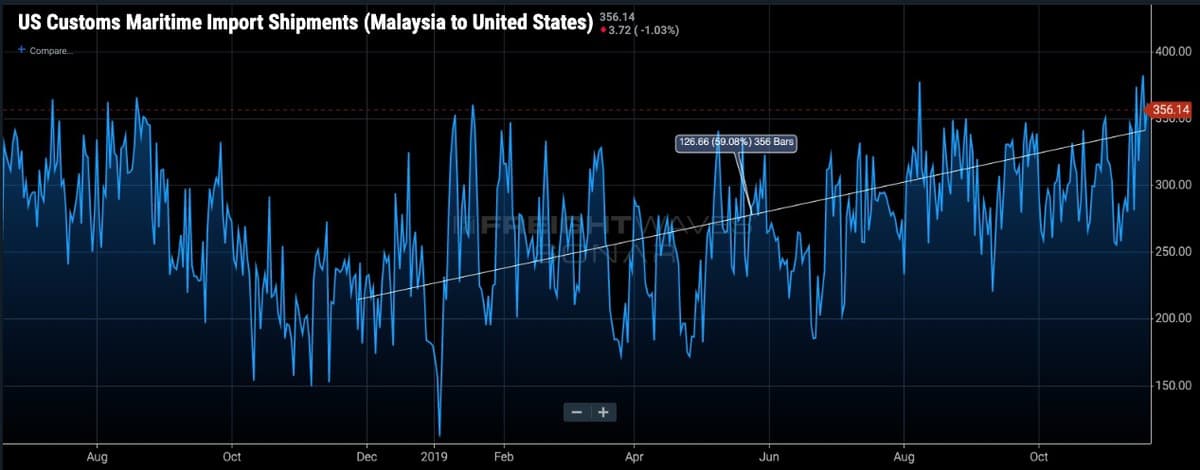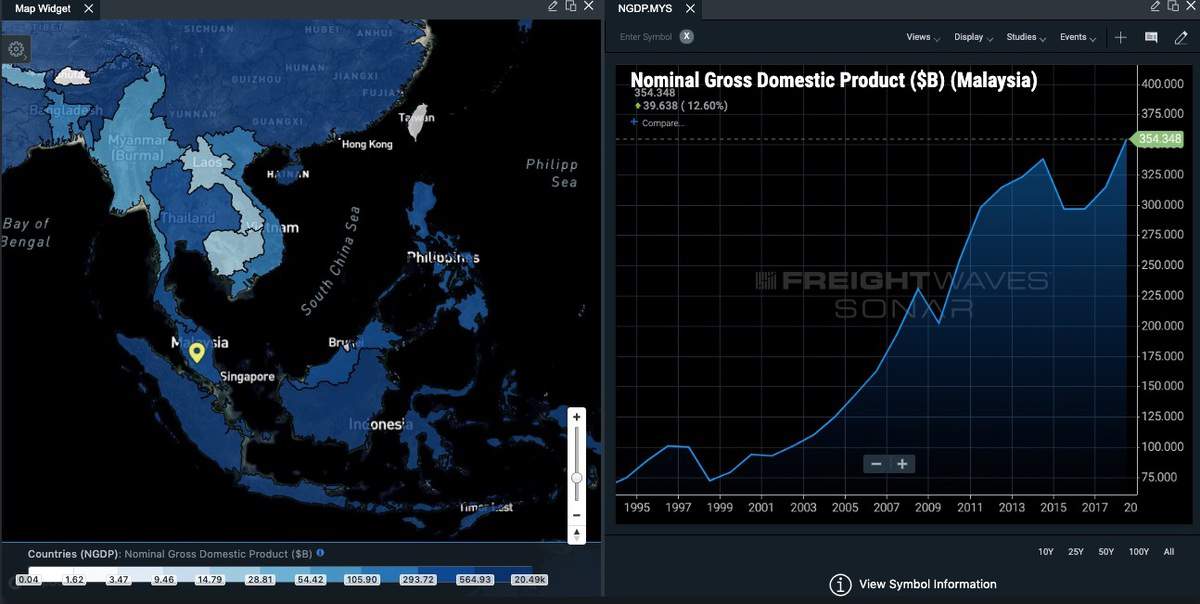It’s a weak start at the beginning of the new financial year for Harbour Link (BM: 2062), which reported a surge in revenues and a surge in costs too. Profitability has fallen.
Harbour Link, a Bintulu eastern Malaysia-based company that provides a wide range of trucking and ocean carrier services, reported revenues of 166.4 million Malaysian ringgit ($39.7 million) in the quarter ended September 30. That’s the first quarter of the company’s financial year, which runs from July to June.
Revenues rose by 4.8% in the company’s first quarter, from the 158.9 million ringgit ($38.4 million) reported in the corresponding period ending September 30, 2018. The company earned an absolute boost in revenues of about 7.6 million ringgit ($1.8 million).
However, that boost was largely offset by a 4.6% surge in operational expenses, which rose from 135.8 million ringgit ($32.8 million) in the quarter ending September 30, 2018 to 142.1 million ringgit ($33.9 million) in the 2019 quarter. That’s an absolute rise in costs of about 6.2 million ringgit ($1.5 million).
A 13.2% surge in administrative expenses to 13.2 million ringgit ($3.0 million) and the adverse impact of a decline of 66.2% in “other” income to a figure of 991,000 ringgit (just over $236,500), helped to reduce Harbour Link’s total comprehensive income for the company’s first quarter.
Ultimately, the company reported a total comprehensive income of 8.5 million ringgit ($2.0 million) for the quarter ended September 30, 2019, which was 28.8% lower than the corresponding quarter in 2018.
Segment-by-segment
The vast majority of Harbour Link’s earnings in the 2019 quarter were generated by its shipping and marine division. That business unit includes ship owning, ship operating and ship agency. Shipping and marine earned 98.6 million ringgit ($23.5 million), which was a 6.6% decline on the figure earned in the corresponding period of 2018.
The company attributed lower revenues to a decrease in cargo volumes to/from East Malaysia, Hong Kong and China.
The segment generated a profit before tax (but after depreciation and amortization) of about 3.0 million ringgit (just over $723,500) in the most recent quarter, which was a decline of 60.1% from the 7.6 million ringgit ($1.8 million) recorded in the corresponding period a year ago. Profit fell due to lower utilization of the East Malaysia/Hong Kong-China route, the company indicated.
Meanwhile, it is an interesting and very different story in the company’s “integrated logistics” division. It comprises land transport, heavy lift, equipment sales and rental along with freight forwarding. That business segment earned 49.3 million ringgit ($11.6 million) in the quarter ended September 39, 2019, which represented a solid 12.3% increase on the corresponding period of 2018. The company attributed revenue growth in this segment to an increase in the volume of oil and gas-related cargoes.
Profits for the integrated logistics division were even more solid. They stood at 9.5 million ringgit ($2.3 million) after having experienced a 27.7% surge from the corresponding period in 2018. Profits increased due to higher volumes handled, the company indicated.
It is interesting to note that, although the integrated logistics division earned about half as much revenue as the shipping and marine division, the integrated logistics division generated a little over three times as much profit.
Looking forward
Harbour Link expressed concerns in three major areas. Firstly, the tensions between Washington and Beijing are adversely affecting sentiment.
“The ongoing U.S.-China trade war continues to create uncertainties in the whole region,” the company said.
Secondly, the company noted that Malaysian markets are affected by prices and volumes in the palm oil, timber products and other such commodities for export.
“The lower export volume will impact our shipping and logistics segment due to lower freighting and utilization of shipping space,” the company said.
Finally, the policy of reserving to national citizens the right to carry ocean cargo over territorial waters from domestic port to domestic port is called “cabotage.” Malaysia opened its coastal waters to international shipping a couple of years ago.
“Liberalization of Cabotage Policy to foreign ships [sic] operators seems to be continuing. Foreign main liner operator is posing a threat to the local operators by capturing a share of the local market. We as the local operator is not immune to such a threat.”
About Harbour Link
In its last annual report, dated October 2019, the company reported full financial year revenues of 594 million ringgit ($143.7 million) and profit after taxes of 29.2 million ringgit ($7.1 million). It had total assets of 651 million ringgit ($157.6 million), of which about 323 million ringgit ($78.2 million) were current assets. It had total liabilities of 189.7 million ringgit ($45.9 million) of which about 133.2 million ringgit ($32.2 million) were current liabilities.
The origins of the group date back to 1975 when the founders of the company offered freight forwarding services in the eastern Malaysian state of Sarawak. Harbour Link Group was incorporated in 2002 and it listed on the Bursa Malaysia in January 2004. Business lines include general, heavy lift and containerized trucking; freight forwarding and associated services; warehousing and container yard operations; along with heavy plant (forklifts, cranes, excavators, etc.) and trucking leasing and rentals.
The company operates a fleet of prime movers, cargo lorries, dump trucks and refrigerated containers for handling a wide variety of trucked cargo from the company’s main location at Bintulu, in eastern Malaysia on the island of Borneo.
The group also offers marine services such as tugs and towage; port stevedoring and shipping agency services. Harbour Link also set up an intra-Asia container line service in 2005, which has expanded operations over time. Today, the group runs the peninsular Malaysia and Malaysian Borneo trade and also serves several east Asian destinations.
These include Nhava Sheva and Chennai in India; Colombo in Sri Lanka; Belawan, Jakarta Semarang and Surabaya in Indonesia; Yangon in Myanmar; Bangkok in Thailand; Ho Chi Minh City and Hai Phong in Vietnam; Hong Kong, Guangzhou, Shantou, Shenzhen, Xiamen, Fuzhou, Ningbo, Shanghai, Qingdao, Dalian and Tianjin in mainland China; Keelung, Taichung and Kaohsiung in Taiwan; Incheon and Pusan in South Korea; and Kobe, Osaka, Nagoya, Yokohama and Tokyo in Japan.
About Malaysian trade


Read more stories by Jim Wilson. Jim is based in Australia but he mostly covers Asia’s maritime sectors. He can be reached with comments, suggestions and tips via jwilson@freightwaves.com.







